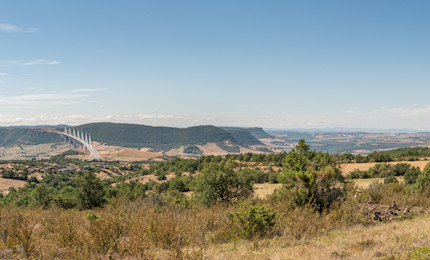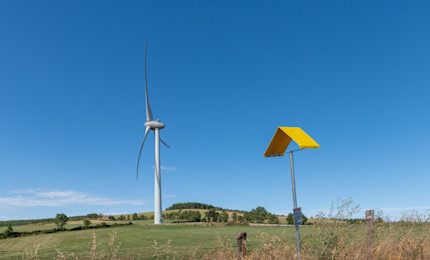Urgence gaz 0 800 028 800

Low-carbon hydrogen in France: an industry under construction
There are many potentials for hydrogen. To take full advantage of this, a competitive low-carbon hydrogen industry needs to be developed. This is one of the objectives of the work carried out by the New Energy Systems Industry Strategic Committee. We shed some light on this subject with its General Delegate, Aurélie Picart.
How is hydrogen a lever for decarbonisation?
Aurélie Picart - About 1 Mt/year of hydrogen (H2) is produced in France. Today it is mainly used in industry as a raw material or part of an industrial process, but its production is mainly carbon-based. Thanks to electrolysis technology, hydrogen can be decarbonised and therefore represents a decarbonisation lever for industry or transport; it can also be used as an energy storage solution. The challenge of its development lies in the creation of a virtuous circle of economies of scale: the increase in demand leads to a decrease in costs which increases demand. Such a virtuous circle has enabled the solar and battery industries to reduce the cost of their technologies by a factor of ten in ten years.
How will its use by industry help structure the hydrogen industry in France?
A. P. - The race for economies of scale is crucial if France is to position itself technologically. As industry is the main consumer of hydrogen, its decarbonised version will be able to develop rapidly, primarily for uses that can pay a premium. Industry is the most structuring market for rapid cost reduction. By 2030, almost 45 kt/year of decarbonised H2 could be produced for the energy sector, 148 kt/year for mobility and 477 kt/year for industry and alternative fuels.
What is the role of the New Energy Systems Industry Strategic Committee (CSF NSE) in the scaling up of the hydrogen sector, and how does it work with Teréga?
A.P. - Launched in 2010, the Industry Strategic Committees bring together manufacturers, the State and trade unions within the National Industry Council. The CSF NSE aims to make the energy transition an opportunity to reindustrialise France. The new contract signed in November 2021 for the period 2021-2023, in the presence of Dominique Mockly, aims to develop the energy transition industry (decarbonisation, energy efficiency, renewable energy, energy networks and storage).
The objective is twofold for hydrogen: to improve the competitiveness of low-carbon H2 while developing a French hydrogen industrial sector. We work jointly with a vast network of partners to develop decarbonised H2 basin projects; we support manufacturers carrying out large-scale projects and territories to develop synergies around these major projects. Our ambition is to accelerate access to low-carbon and renewable H2 and develop the industry along the entire value chain.
Teréga is closely involved in the various working groups of the CSF NSE, to develop the various new gases. It is a key player in the hydrogen sector and the bearer of international structuring projects. A driving force in the South-Western hydrogen basin project, Teréga is also a major player in French and European partnerships, particularly in Spain. The company is involved with us in the Energy Challenges to promote purchasing opportunities for diversifying French manufacturers, and sponsors the new "Je décarbone" platformwhich aims to support manufacturers seeking to decarbonise their processes.
To date, the government has not included infrastructure in the three priorities of its hydrogen strategy (electrolysis, industrial decarbonisation and mobility). How does the NSE FSC integrate this issue into its work?
A. P. - Noting the importance given to international issues and transport in the hydrogen plans of our European neighbours, we launched a study on the competitiveness of the cost of delivered hydrogen, investments and security of supply in different infrastructure configurations and H2 demand volumes in 2030 and beyond. Published in November 2021, it demonstrates the impact of H2 transport and storage infrastructures to improve the competitiveness of low-carbon hydrogen and therefore of the industry in France. By pooling production capacities, the deployment of hydrogen infrastructures between industrial areas could reduce the cost of the renewable and low-carbon H2 delivered by 10% by 2030 compared with a no-infrastructure scenario.
These infrastructures linking industrial basins would reduce cumulative investment costs by 9% in 2030, or €300 million, and by 19% by 2040, or €3 billion. By 2040, and provided that the production and consumption strategies of neighbouring countries are confirmed and that demand grows strongly, the connection of French infrastructures to the rest of Europe could reduce the cost of H2 by 32% for French consumers, requiring investments of €1.6 billion.
This is all the more important given France’s strategic position at the crossroads of a Mediterranean zone producing competitive decarbonised hydrogen and a Northern Europe wishing to import low-carbon H2. We are now continuing this work with the various state and industrial stakeholders to integrate this issue into the national hydrogen strategy, or even the future French strategy for energy and climate.
What are the main opportunities that hydrogen represents for the territories?
A.P. - Beyond the ecological opportunity to decarbonise industry or transport, hydrogen brings two types of economic opportunities to territories. Producing and distributing competitive hydrogen will be a key factor in the attractiveness of territories. Thus, all the levers that can be used to lower the cost of hydrogen in France (support for major industrial projects, hydrogen basins, a corridor of stations, a European transport backbone and hydrogen storage, etc.) must be studied in detail. Furthermore, the development of a French hydrogen industry (electrolysers, fuel cells, tanks, stations, etc.) will have an impact on the various territories. The mobilisation of all stakeholders is key to be able to accelerate the hydrogen sector’s development. We all have a role to play in seizing this opportunity to reindustrialise France and the CSF NSE knows that it can count on the Teréga Group teams to do this!
Our expert: biography
After a decade of leading innovation initiatives within private groups and French administrations, Aurélie Picart created the New Energy Systems Industry Strategic Committee in 2018. She is the General Delegate.









